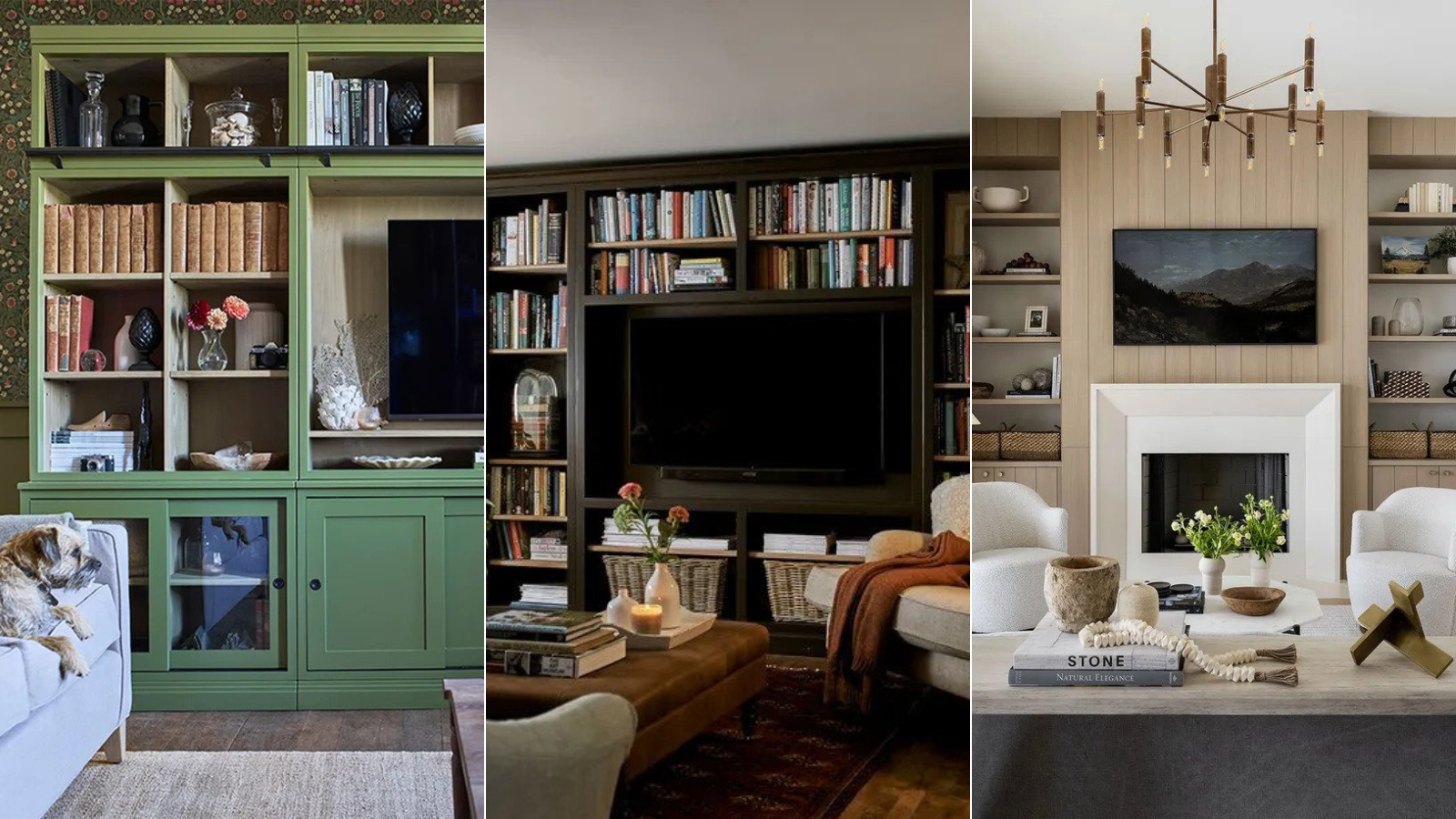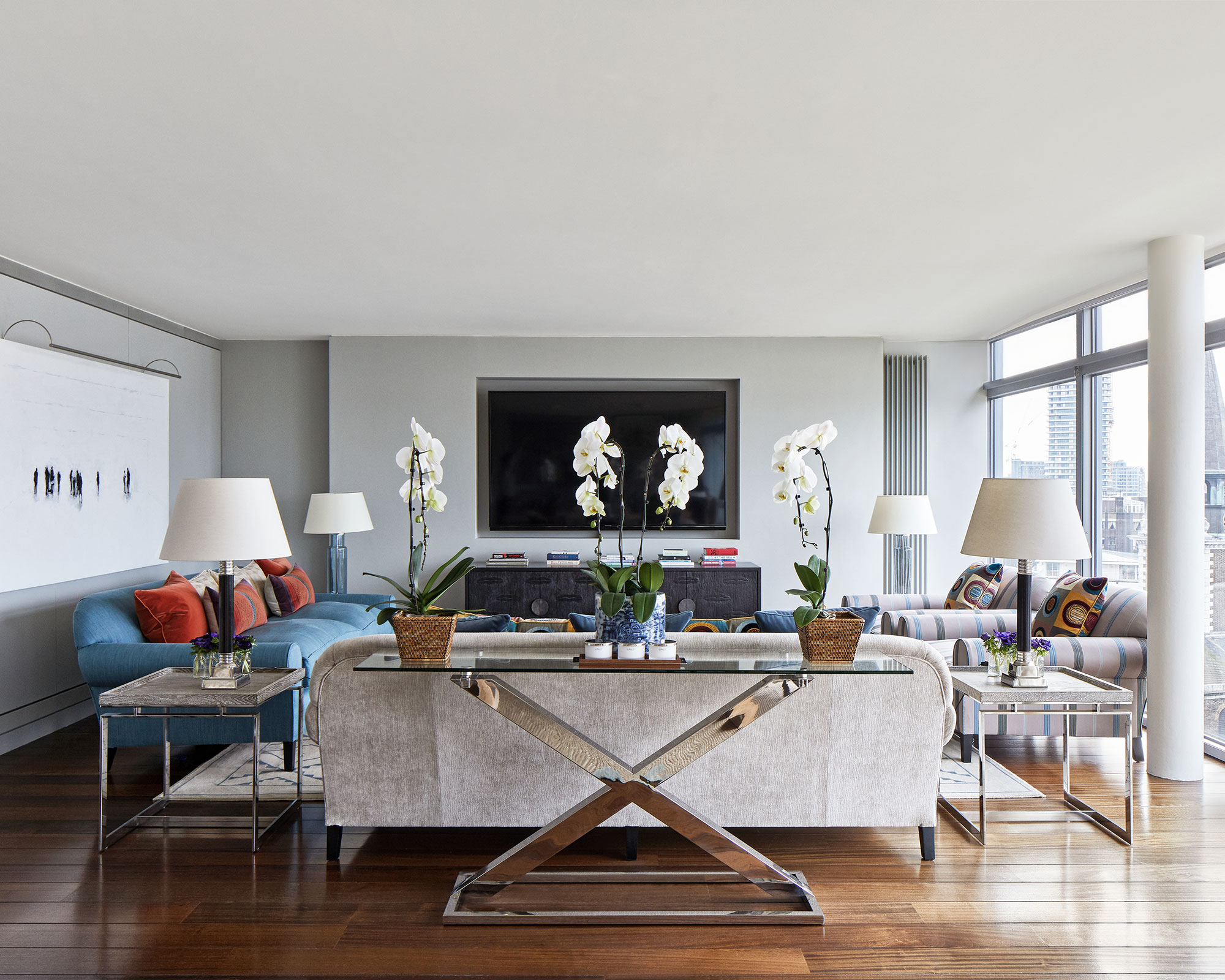How to organize cables behind the TV –clever ways to keep them neat and discreet
Wave goodbye to mess. These are the experts’ top tips for organizing cables behind the TV


They may be an inevitable feature of a living space, but they’re ugly, too, so it pays to know how to organize cables behind the TV. That way, they won’t prove an eyesore plus you’ll know which one is which when you need to.
Organizing cables around the home is a task that’s unavoidable if you want to put a stop to unsightly tangles, and those behind the TV are especially intrusive because there are so many of them, and your gaze is naturally turned that way.
The answer? Team living room storage ideas with these clever ways to organize the cables behind the TV from the pros and you can ensure the room’s design isn’t compromised by clutter.
Organize cables behind the TV: the top strategies
The TV, plus the tech that comes with the big screen, equals a whole lot of cables. The result can be a mess that means it’s hard to find the right one when you need to. Worse, they can spoil the lines of the room and grab the attention you don’t want them to have.
They needn’t be eye-catching or messy, though. Organizing a living room can include the expert strategies detailed below, so that cables behind the TV are both neat and discreet.
1. Go for a custom design

A custom design can conceal cables behind the TV and create display space. Be inspired by this design from interior designer Kristin Kong of K Kong Designs.
‘In this project’s living room, all electrical components for a TV and sound system are hidden behind a paneled wall,’ she explains. ‘This wall of built-ins hides a stairway to the basement, provides bookcases for displaying collected items, and includes a false panel that hides all of the electrical cords and items needed for this family’s entertainment systems.’
Design expertise in your inbox – from inspiring decorating ideas and beautiful celebrity homes to practical gardening advice and shopping round-ups.
It's vital cords remain accessible, of course. The solution? ‘A magnetized panel enables easy accessibility while staying true to the clean lines of the sophisticated entertaining area,’ says Kristin.
2. Corral cables in a cabinet

Furniture choices can help keep cables behind the TV organized. ‘Many built-in cabinets can incorporate custom cable management systems,’ says Heather Aiello, CEO and founder at The Organized You. ‘These systems often use clips, ties, and tracks that are integrated into the cabinet’s design to keep cables organized and out of sight.’
Built-in cable channels can also keep things tidy. ‘Consider creating built-in channels within the cabinets that allow cables to be neatly routed and hidden,’ she says.
Alternatively, look for furniture with removable back panels. ‘Some cabinets come with removable back panels that make it easy to access and organize cables,’ Heather explains. ‘These panels can be cut and customized to keep cables tidy.’
3. Hide cables in plain sight

Furniture isn’t essential to conceal cables. There are products specially designed to hide them while blending into the room’s decor.
‘Decorative cable boxes/organizers are stylish boxes designed to hide and organize cables,’ explains Heather Aiello. ‘They come in various designs and colors to match your room’s aesthetic.’
Or try cable sleeves and covers. ‘Look for decorative cable sleeves or covers that blend with your decor,’ says Heather. ‘These can bundle multiple cables together and can be in colors or patterns that match your room.’
Alternatively, there are cable clips and ties. ‘Designer cable clips and ties can organize cables without spoiling the aesthetic,’ she explains. ‘They can be used to route cables along furniture lines in a tidy manner. You can also use these to organize cords if they need to run along the base of a wall.’
4. Deal with wall-mounted TVs

Organizing the cables behind a wall-mounted TV is crucial to avoid an eyesore. However, there are solutions. You might want a cover you can paint, for example. ‘This paintable cordline wall cable channel from The Container Store is perfect to blend right into any color wall,’ says Jamie Hord, founder of Horderly Professional Organizing.
Heather Aiello agrees. ‘They are so easy to use and work great,’ she says of paintable cable covers. And she has some additional suggestions. ‘In-wall cable management systems allow you to run cables through the wall, completely hiding them,’ she says. ‘This option requires some installation but offers a very clean look.’
Or try floating shelves. ‘Installing a floating shelf below the TV can help hide the cables and also provide a place for other devices,’ she advises.
FAQs
How do you hide wires behind a TV unit?
To avoid an unlovely mess behind the TV, try products that neaten wires up to make them unobtrusive. ‘Color-coded cable ties and labels can keep things organized and easily identifiable,’ says Heather Aiello, CEO and founder at The Organized You.
Or, if that doesn’t leave them hidden enough, go for one of the decorative takes on cable sleeves and covers, cable boxes and clips and ties. Furniture can help, too. ‘Strategically placing furniture like a console table or plants can help hide cables,’ says Heather. Take care when hiding wires, she advises. ‘Ensure that your cable organization methods do not impede electrical safety or create tripping hazards. Remember to always use a surge protector.’
Cords and cables are a fact of modern life, but the clutter isn’t welcome in any room. However, they can be organized wherever they proliferate with ways to hide cords on kitchen counters, and under-desk storage ideas. Cable storage solutions are one of the must-haves for small family rooms, too, to prevent a tangle.

Sarah is a freelance journalist and editor. Previously executive editor of Ideal Home, she’s specialized in interiors, property and gardens for over 20 years, and covers interior design, house design, gardens, and cleaning and organizing a home for Homes & Gardens. She’s written for websites, including Houzz, Channel 4’s flagship website, 4Homes, and Future’s T3; national newspapers, including The Guardian; and magazines including Future’s Country Homes & Interiors, Homebuilding & Renovating, Period Living, and Style at Home, as well as House Beautiful, Good Homes, Grand Designs, Homes & Antiques, LandLove and The English Home among others. It’s no big surprise that she likes to put what she writes about into practice, and is a serial house renovator.